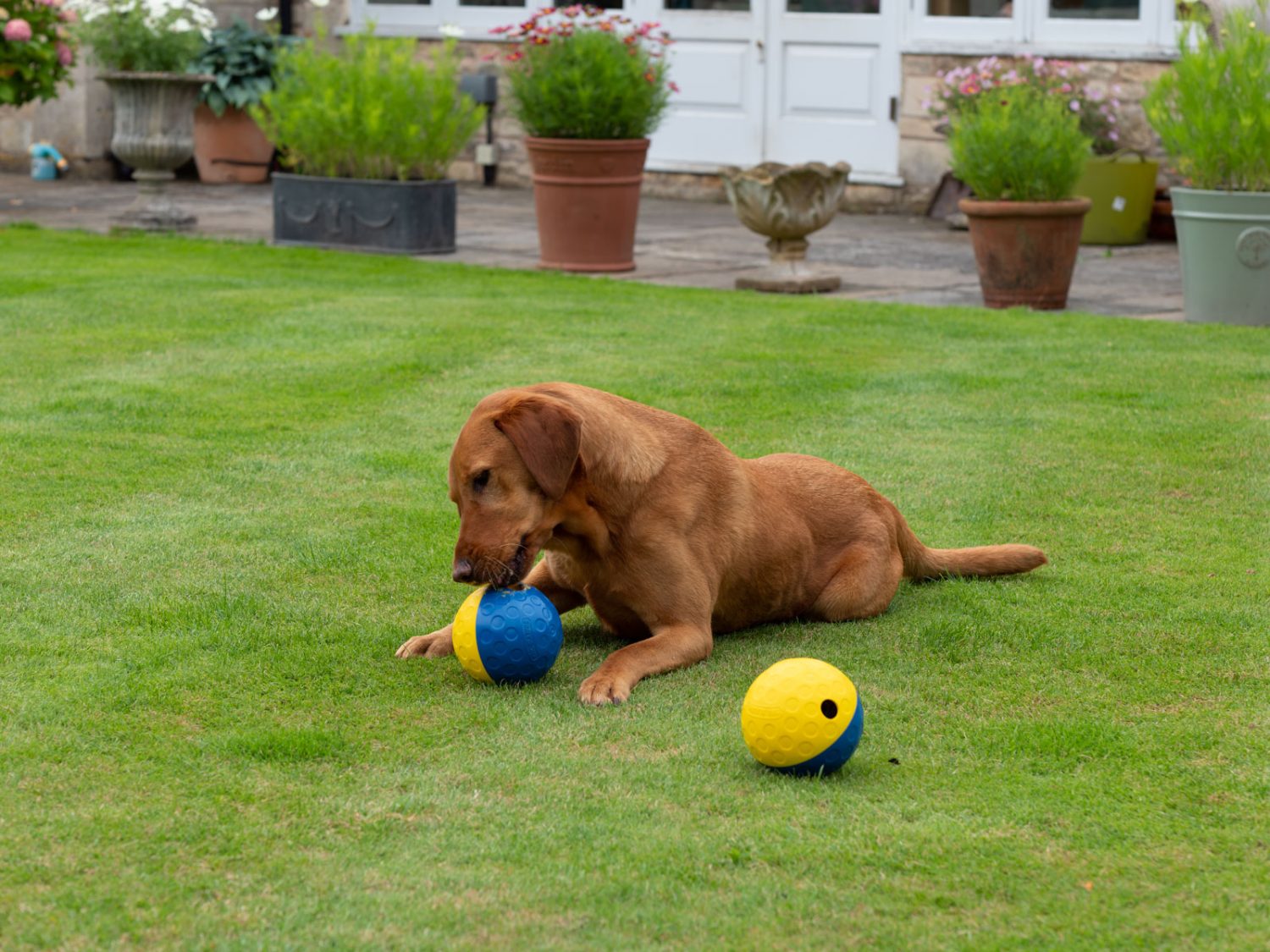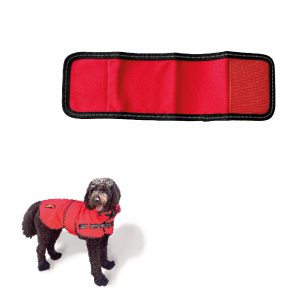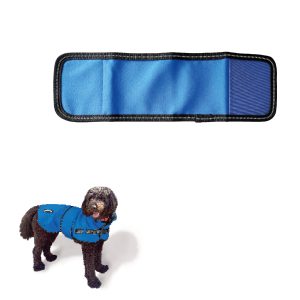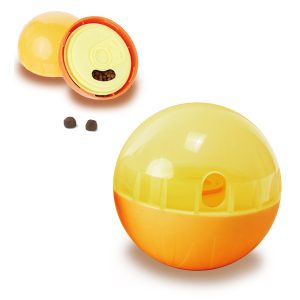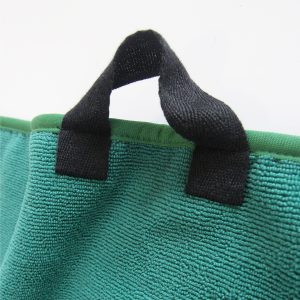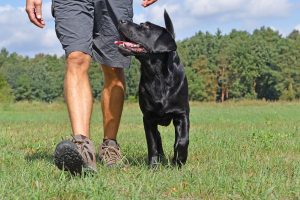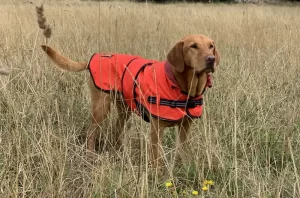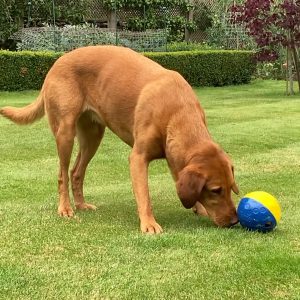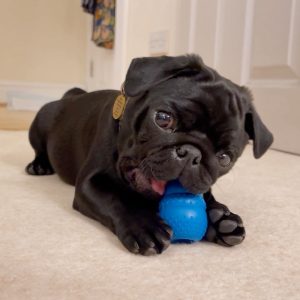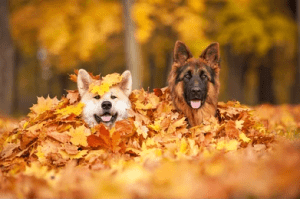
Dr Ellen Marcinkiewicz
BVSc. MRCVS
Interactive feeding toys, like treat balls, are a great way to keep your dog entertained and stimulate its natural instincts. As a veterinarian, I like to use interactive feeders rather than traditional bowls when feeding my dog and routinely recommend them to my clients. This article will discuss the benefits of treat balls and everything you need to know to get your dog using them safely.
How does a dog treat ball feeder works?
A treat ball is an interactive feeding toy that slowly dispenses food as your pup rolls and plays with it. The classic treat ball usually has food hidden in the centre that falls out through holes of different sizes, but some also have grooves where treats can be hidden.
Treat balls vary in difficulty depending on the size of the holes and the type of food placed inside. They are typically made from natural rubber or hard plastic and come in various sizes depending on the breed and size of your dog. Treat balls are just one of the many types of interactive feeding toys on the market including slow feeding bowls, puzzle toys, Kong toys, and snuffle mats.
Are treat balls good for dogs?
Treat balls and interactive feeders have many benefits for dogs including providing mental stimulation and enrichment. These toys are designed to help engage your pup’s problem solving and natural hunting skills and can help with problems like boredom and destructive behaviour. They’re also an excellent way to keep your pup entertained when you leave the house and can be useful in cases of separation anxiety.
Interactive feeders also help to slow down speedy eaters that inhale their food a little too quickly! This is particularly important for large breed dogs or deep-chested breeds that are at high risk for developing bloat or GDV (gastric dilation-volvulus) such as Great Danes, Akitas, German Shepherds and Greyhounds. They can also help with weight loss as they encourage movement and slow down food intake.
What can I put in my dog’s treat ball?
Most treat balls are designed to be used with kibble and dry dog treats, but you could also include small pieces of carrot or apple as a healthy snack. The most important thing is to make sure the size of the kibble or treats fits through the holes in the ball so your dog can claim their reward. As your dog gets better at using the treat ball, you can upgrade to one with smaller holes (or use larger treats) to increase the difficulty.
When teaching your dog to use a treat ball, it can be helpful to use some of their favourite high-value treats to help get them interested. This could be commercial dog treats or small pieces of cooked chicken or cheese. If your treat ball has grooves you could also try placing a little dog-friendly peanut butter or low-fat cream cheese in these areas, but be warned, this can get messy if your pup is using the ball indoors!
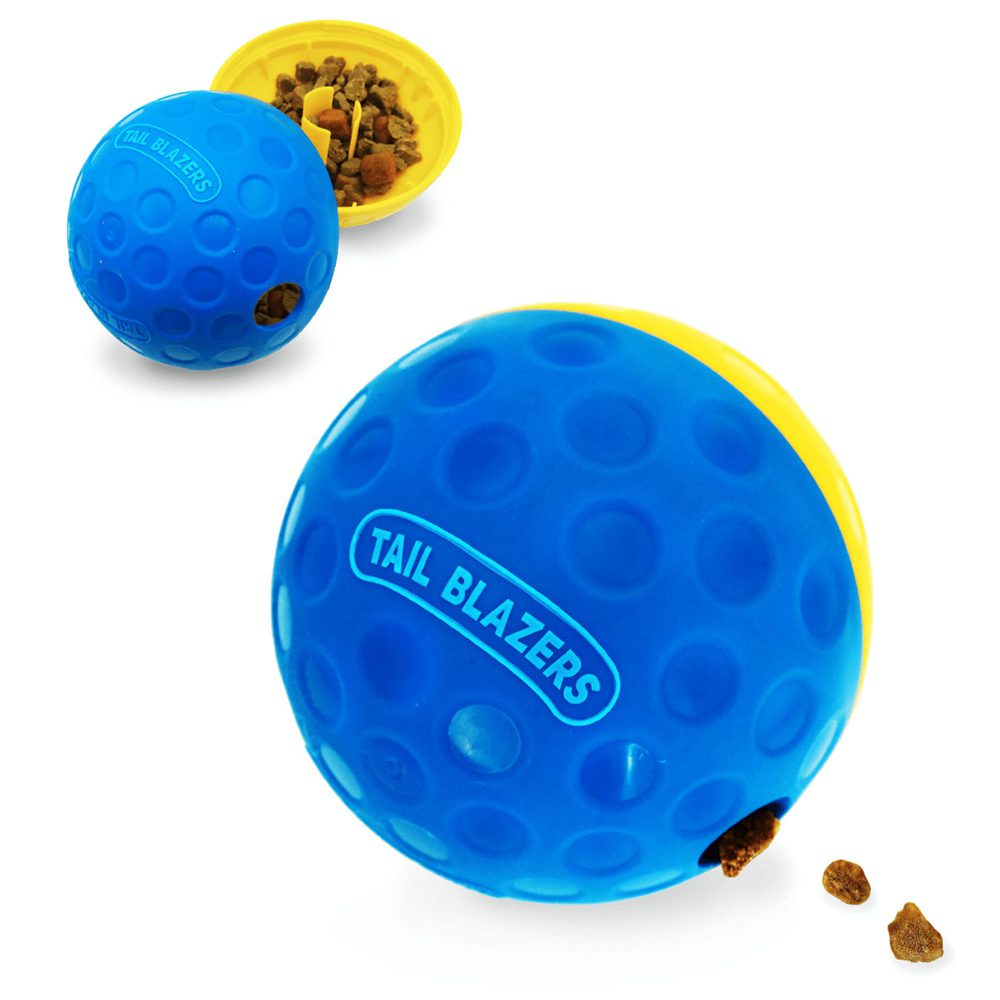
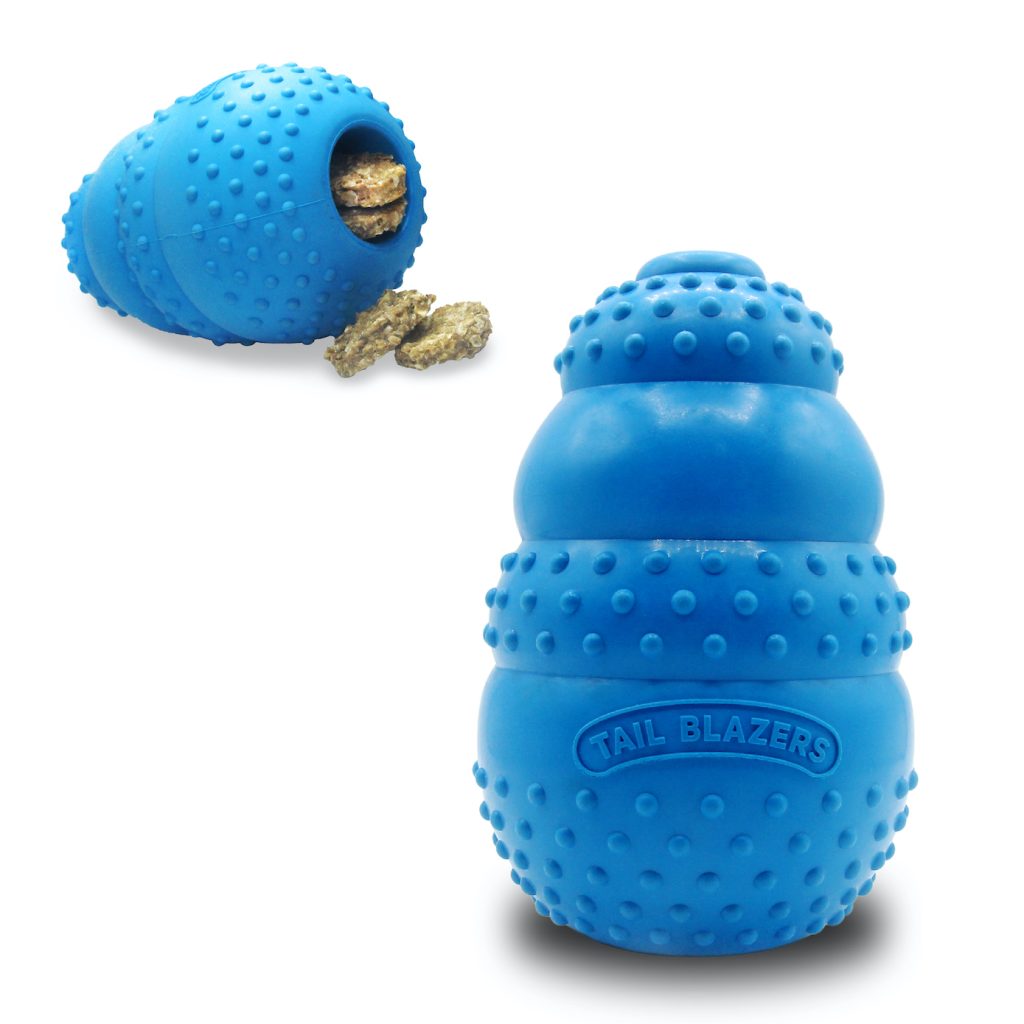
What to look for in a dog treat ball feeder?
The best treat ball for your pup will depend on their individual needs. Large-breed dogs that like to chew up their toys might find a durable hard plastic treat ball best, just make sure the size is large enough to reduce the risk of choking or mouth injury. Small breed dogs and flat-faced (brachycephalic) breeds may prefer a smaller ball in a softer material, like rubber, for chewing.
Regardless of your pup’s size, the treat ball should be large enough that it cannot easily become lodged in their mouth and risk choking. If in doubt, it’s always safest to size up and carefully monitor your dog when using a new interactive feeding toy. A dog’s vision is somewhat similar to a person who is red-green colour blind and for this reason, it can also be useful to select toys in the colours they can see more easily, such as blue and yellow.
Also keep in mind that harder plastic toys can be noisy on wood floors or tiles, so think about where your pup will be using the toy and if this might bother you or your neighbours.
Feeding Dogs Interactively – What you need to Know about Dog Treat Ball Feeders
Top tips for using a treat ball
- Monitor your dog closely when using a treat ball. This goes for any new toy or interactive feeder.
- Start at a lower difficulty (larger holes or smaller pieces of food) and then increase the challenge as your dog gets quicker at solving the puzzle!
- If your dog is in between the recommended sizes, it’s usually safer to choose the larger size.
- Encourage your dog to use their new treat ball by using their favourite high-value treatsze.
- You may need to show your pup how the treat ball works by gently rolling or nudging it.
- Once your pup is used to their treat ball or interactive feeder, you can feed their meals this way instead of using a traditional bowl!
- Treat balls are best used in open spaces where they can’t get stuck under the couch or other furniture.
- Take care using treat balls or interactive feeders in multi-dog households and only ever under close supervision as this could result in resource guarding and fighting.
Conclusion
Treat balls and interactive feeding toys are a fun way to provide mental stimulation and enrichment to your pup and have many benefits, including keeping dogs active and slowing down their eating time. When introducing a treat ball to your pup for the first time, monitor them closely and make sure to encourage them by using their favourite treats!
